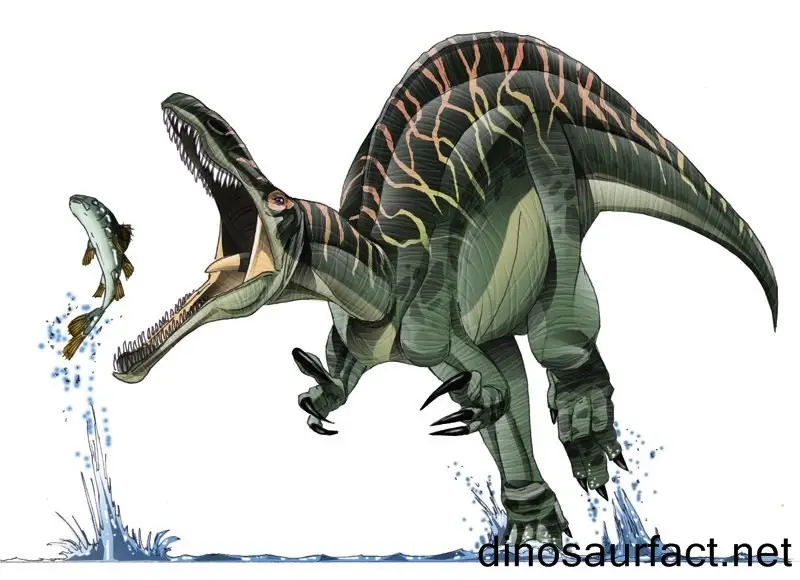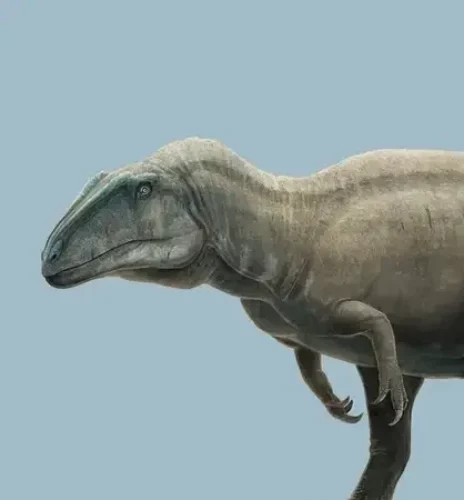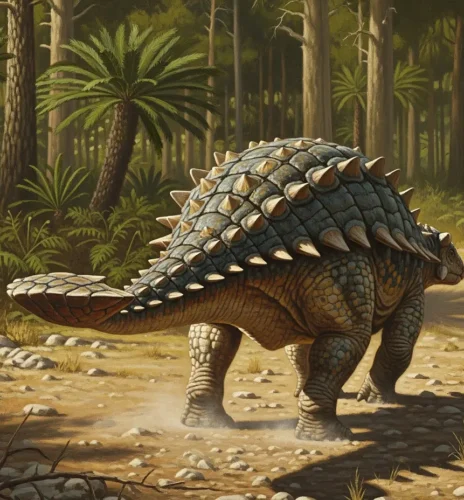For many, the term “dinosaur” conjures images of towering tyrannosaurs or gentle giants like Brachiosaurus. But the prehistoric world was far more diverse and filled with fascinating creatures that often fly under the radar. Today, we’re diving deep into the world of one such dinosaur: Suchomimus tenerensis, the “crocodile mimic” from the sands of Niger. Prepare to be captivated by this unique predator, its razor-sharp teeth, and the secrets it continues to reveal.
For years, Suchomimus has intrigued paleontologists with its distinctive features, hinting at a lifestyle unlike many other large theropods. While it might not be as instantly recognizable as its famous cousins, Suchomimus holds a crucial place in our understanding of dinosaur evolution and the ecosystems of the early Cretaceous period.
Here are five of the most fascinating facts about this remarkable dinosaur:
1. The Crocodile Mimic Lives Up to Its Name: The most striking feature of Suchomimus is undoubtedly its long, slender snout packed with over 100 serrated, backward-curving teeth. This dental arsenal is remarkably similar to that of modern crocodiles, strongly suggesting a diet heavily reliant on fish. This adaptation allowed Suchomimus to exploit a different ecological niche than many other contemporary theropods, likely reducing competition for resources.
2. A Thumb with a Punch: The name Suchomimus literally translates to “crocodile mimic,” but the genus name Baryonyx, a close relative, means “heavy claw.” This refers to the massive, curved claw on the thumb of these dinosaurs. In Suchomimus, this claw was particularly impressive, reaching lengths of over 30 centimeters (almost a foot!). While its exact function is still debated, it was likely used for grasping slippery prey like fish, tearing apart carcasses, or even in intraspecific combat.
3. A Sail-Backed Surprise (of Sorts): While not as dramatic as the sail of its cousin Spinosaurus, Suchomimus possessed elongated neural spines on its vertebrae, forming a low crest or ridge along its back. The exact size and shape of this structure are still debated based on the fossil evidence, but it suggests a possible display function or even a role in thermoregulation. It highlights the evolutionary experimentation within the Spinosauridae family.
4. A Wanderer of Waterways: The skeletal features of Suchomimus, including its long snout, conical teeth, and powerful forelimbs (likely used for maneuvering in or around water), strongly indicate a semi-aquatic lifestyle. Fossil discoveries have often been associated with ancient river systems and floodplains in what is now the Sahara Desert. This reinforces the idea of Suchomimus as a formidable predator in both terrestrial and aquatic environments.
5. Bridging Continents and Time: The discovery of Suchomimus in Niger provided crucial evidence for the widespread distribution of the Spinosauridae family during the early Cretaceous (around 125-112 million years ago). Its close resemblance to Baryonyx from England highlights the faunal connections between Africa and Europe during this period, before the complete separation of the continents.
Recent Discoveries and Findings:
While the initial discovery of Suchomimus by paleontologist Paul Sereno and his team in the late 1990s was groundbreaking, ongoing research continues to shed light on this fascinating dinosaur.
- Is it a distinct genus? One of the ongoing debates within the paleontological community revolves around whether Suchomimus is truly a distinct genus or a larger species of Baryonyx (Baryonyx tenerensis). While current consensus leans towards its distinct status based on subtle differences in skull and vertebral anatomy, further fossil discoveries and detailed phylogenetic analyses are crucial to solidify its place in the dinosaur family tree.
- Jaw Mechanics and Diet: Recent biomechanical studies utilizing computer modeling have further supported the idea of a piscivorous diet for Suchomimus. Analyses of its jaw structure and muscle attachments suggest adaptations for quick, powerful bites suitable for catching slippery fish. However, evidence of terrestrial prey in the gut contents of related spinosaurids suggests they weren’t exclusively fish-eaters, and Suchomimus likely had a varied diet.
- Growth and Development: While complete growth series for Suchomimus are still lacking, studies of the discovered specimens provide insights into its ontogeny (growth and development). Comparisons of different-sized individuals can help paleontologists understand how its features, like the neural spines and the thumb claw, changed as it matured.
The story of Suchomimus is far from over. The harsh, fossil-rich landscapes of the Sahara likely hold more secrets waiting to be unearthed. Each new fragment contributes to a more complete picture of this remarkable predator and the dynamic ecosystems it inhabited millions of years ago. So, the next time you think of dinosaurs, remember the “crocodile mimic” – a testament to the incredible diversity and ecological specialization that defined the Age of Reptiles.
Resources:
- Sereno, P. C., Beck, A. L., Dutheil, D. B., Gado, B., Larsson, H. C. E., Lyon, G. H., … & Varricchio, D. J. (1998). A long-snouted predatory dinosaur from Africa and the evolution of spinosaurids. Science, 282(5392), 1298-1302.
- Charig, A. J., & Milner, A. C. (1986). Baryonyx walkeri, a fish-eating dinosaur from the Wealden of Surrey. Nature, 324(6095), 359-361.
- Ibrahim, N., Sereno, P. C., Dal Sasso, C., Maganuco, S., Farke, A. A., Martill, D. M., … & Larsson, H. C. E. (2014). Semiaquatic adaptations in a giant predatory dinosaur. Science, 345(6204), 1613-1616. (While focused on Spinosaurus, it provides valuable context for understanding spinosaurid adaptations).
- Various research articles available on platforms like PubMed, Google Scholar, and university repositories focusing on Spinosauridae and early Cretaceous theropods.
- Thank you to https://dinosaurpictures.org/Suchomimus-pictures for their amazing picture!



